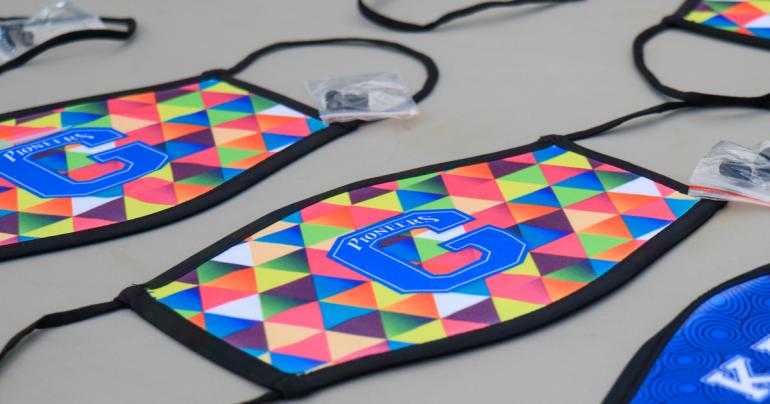
For Immediate Release: June 24, 2022
For More Information:
Glenville State University
Public Relations & Marketing
(304) 462-4115
GLENVILLE, WV - As part of their research during the spring 2022 semester, students in Dr. Nabil Nasseri’s Air, Water, and Soil Quality class conducted a small experiment to test the efficacy of masks and different mask materials in preventing the movement of water molecules and particulate matter 1.0 micron and smaller (PM 1.0). The objective of the experiment was to determine the utility of wearing masks indoors to help prevent the movement of COVID-19 and whether or not the mask material changed their effect.
The primary mode of COVID-19 infection is through the dispersal and inhaling of COVID-19 particles attached to water molecules expelled through breathing. Research has shown that, on average, the size of COVID-19 virus ranges from 0.1 – 0.5 microns and a respiratory droplet containing COVID-19 is 5 – 10 microns. The class used percentage of relative humidity (% RH) as a proxy for movement of respiratory droplets. The class also measured PM 1.0 levels by measuring smoke generated by burning grass and twigs. Smoke generated from plant material averages around 0.4 – 0.7 microns, which is within the size range of the COVID-19 virus.
“We tested the percentage of relative humidity and particulate matter 1.0 amounts using PocketLab Air monitoring sensors. Sensors were first left exposed to record the initial %RH and PM 1.0. The sensors were then covered with the different mask materials or no mask and exposed to breath and smoke. The mask material tested were cloth/bandana fabric and surgical masks,” Nasseri explained.
The experiment showed that, regardless of mask material, a properly worn mask reduced the dispersal and inhalation of respiratory droplets by 3-5%, while no mask increased the number of droplets in the air by 64%. In the particulate matter experiment, the cloth mask reduced exposure by 35.5% and the surgical mask reduced exposure by 53.5% compared to no mask and by 28% compared to a cloth mask. Although not perfect, wearing some sort of mask reduced exposure to COVID-19 sized particles anywhere from 30-53%.
Nasseri added that, although the spirit of the experiment was driven by the current issue of COVID and mask policies, the information gathered can also be applied to general workplace safety where there is a high likelihood of being exposed to poor air quality such as construction sites, pesticide/herbicide applicators, painters, mining and oil/gas operations, and others.

